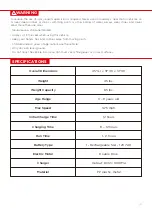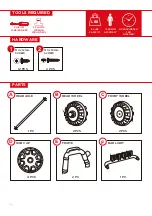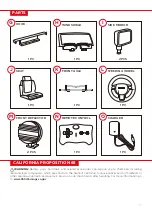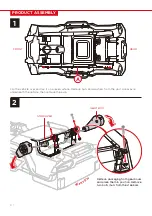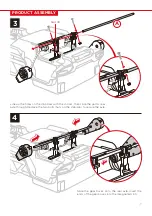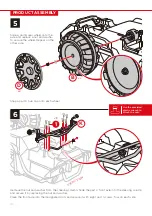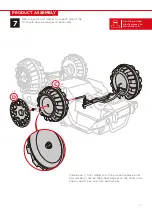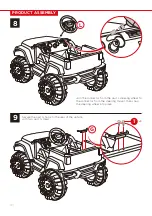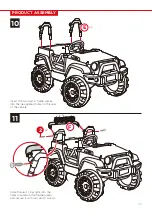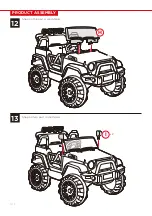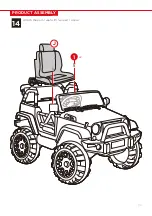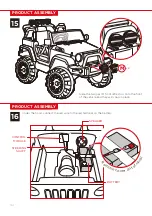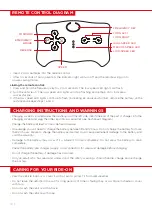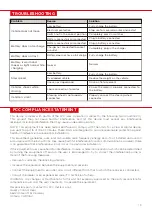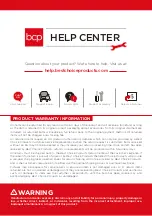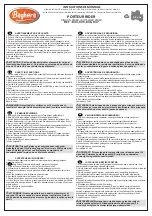
|
19
TROUBLESHOOTING
Reason
Low battery
Electrical protection
Switch not in the correct position
Battery connectors disconnected
Low battery
Overloaded vehicle
Uneven or sloped road
Loose connection to motor
Steering wheel is not properly
connected
Battery connectors disconnected
Charger not connected to socket
or outlet
Battery does not have a full charge
Normal
Problem
Battery is warm and
makes a slight noise while
charging
Slow speed
Vehicles shakes while
driving
Vehicle is silent
Battery does not last
Battery does not recharge
Vehicle does not move
Solution
Fully charge the battery
Stop use for several minutes and restart
Completely press in switches
Plug in battery connectors
Fully charge the battery
Reduce the weight on the vehicle
Drive on flat pavement
Ensure the motor is properly connected to
the battery
Properly connect the steering wheel
connector
Plug in battery connectors
Completely plug in the charger
Fully charge the battery
Normal
This device complies with part 15 of the FCC rules. Operation is subject to the following two conditions: (1)
This product may not cause harmful interference, and (2) this device must accept any interference
received, including interference that may cause undesired operation.
NOTE: This equipment has been tested and found to comply with the limits for a Class B digital device,
pursuant to part 15 of the FCC Rules. These limits are designed to provide reasonable protection against
harmful interference in a residential installation.
This equipment generates, uses, and can radiate radio frequency energy and, if not installed and used in
accordance with the instructions, may cause harmful interference to radio communications. However, there
is no guarantee that interference will not occur in a particular installation.
If this equipment does cause harmful interference to radio or television reception, which can be determined
by turning the equipment off and on, the user is encouraged to try to correct the interference by one or
more of the following measures:
• Reorient or relocate the receiving antenna.
• Increase the separation between the equipment and receiver.
• Connect the equipment to an outlet on a circuit different from that to which the receiver is connected.
• Consult the dealer or an experienced radio/TV technician for help.
WARNING: Any changes or modifications to this unit not expressly approved by the party responsible for
compliance could void the user's authority to operate the equipment.
Responsible party (contact for FCC matters only):
Quality Control Dept.
5642 Ontario Mills Parkway
Ontario, CA 91764
FCC COMPLIANCE STATEMENT

